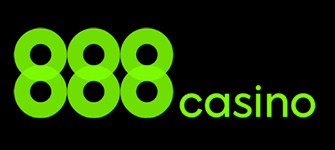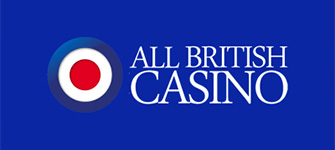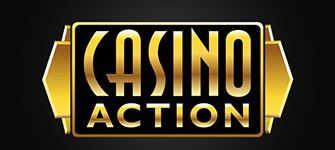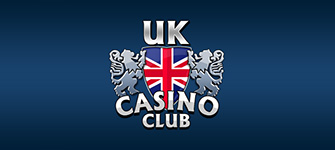Blackjack Basics
Blackjack is perhaps the most played casino game in the world, if not the most popular one (a title usually reserved for the grandfather of all table games, poker). Unlike poker, your objective in blackjack is not to beat fellow players. Instead, you are playing against a dealer who you are trying to crush. Blackjack games are most commonly dealt out of a device called a “shoe”, which can contain anywhere between four and eight decks of cards. Each player’s starting hand (including the dealer’s) consists of two cards. The game is played using all 52 cards (jokers are removed).
The more decks there are in play, the bigger the house edge gets. The dealer will also deal two cards to themselves, but keep one of them face-down whereas players’ cards are dealt face up. Such blackjack variations are referred to as “hole-card games”. You beat the dealer by drawing to a hand total that is higher than theirs and as close to 21 as possible without going over. This is blackjack in a nutshell, and if you are interested in learning more about this fascinating table game, please do read on.
- ✓ Pitch Games vs Shoe Games
- ✓ Card Values
- ✓ The Start of a New Shoe
- ✓ Placing a Bet
- ✓ How is the Game Played
- ✓ Playing the Game
Pitch Games versus Shoe Games
Blackjack games are commonly classified into two basic categories – pitch games and shoe games. When blackjack first gained popularity in neon cities, the casinos offered only pitch games where one or two decks of cards were in play. In pitch games, everyone’s starting hands, including the dealer’s, are dealt face down preventing you from seeing other people’s totals.
Here players are allowed to pick their cards to check their hands’ starting totals. The dealer holds the pack(s) in their hand and tosses or “pitches” the cards when dealing players’ face-down hands, hence the name a “pitch” game. Proper etiquette dictates players must check their starting totals by picking their two initial cards with one hand only.
Another difference lies in the hand gestures players use when signalling that they want extra cards. In pitch games, one is required to scrape their cards over the felt to indicate a hit. Due to the small number of decks in play, pitch games used to be more favourable to players since they had a lower house edge (past tense is used intentionally, mind you).
Then came Mr Edward Thorp and forever changed the concept of how blackjack should be played. The year 1962 was crucial for blackjack players as it saw the publishing of Beat the Dealer, a book in which Mr Thorp introduced the concept of playing blackjack optimally and actually beating the game through perfect blackjack strategy and card counting.
Thousands of rookie counters flooded the floors of Las Vegas casinos in an attempt to beat the house at its own game. Most of them were not successful but those, who were, forced the casinos to re-evaluate the rules at their blackjack tables. One-deck games gradually gave way to two and four-deck games in an attempt to boost the house’s edge and decrease that of counters.
It was around the time of Beat the Dealer’s publishing that magician and author John Scarne came up the idea of the shoe. Scarne approached the Nevada Gaming Commission with the proposition of dealing all blackjack games from a specially engineered card dispenser, called a “shoe” due to its semblance to high-heel footwear. Scarne’s initial intentions were to reduce dealer cheating and allow the game to be played with more than one deck.
The dealer would draw one card at a time from this contraption which made it impossible for them to implement cheating techniques like second dealing. The latter requires a sleight of hand and is achievable only when the cheating dealer is holding the pack(s).
The higher the number of decks, the bigger the house edge, rendering it more difficult for skilled players to “cheat” through counting (a practice which remains perfectly legal to this day). Thus, casinos across Sin City seized the opportunity of boosting their edge and counteracting aspiring counters.
Today, shoe blackjack has become the norm in gambling establishments around the world, allowing dealers to use up to eight packs of cards. Pitch tables are rare to find and even if you do succeed, the rules will be poor enough to make the games unplayable.
Shoe games utilise anywhere between four and eight decks. Players’ cards are dealt face-up whereas the dealer would receive one face-up and one hole card. The hand gestures you use when acting on your hand are also different and so is the etiquette you are expected to follow at shoe tables. Here, you indicate you do not want more cards with a sliding motion over your hand. You are supposed to tap the table to signal you want to draw additional cards. Under no circumstances should you touch your cards in a shoe game!
Card Values
Nowadays, the game of blackjack is normally played with multiple decks (six or eight in most variations) containing 52 cards each. There are the usual four suits of course – Clubs, Spades, Hearts and Diamonds (do not worry about suits, they are irrelevant in blackjack unless you try to exploit certain side bets). What you will be looking at is the value of each individual card. The values of cards in blackjack are as follows:
Cards 2 through 10 are assigned their pip value so a 2 has a value of 2, a 3 has a value of 3 and so on.
Face Cards Each face card (King, Queen, or Jack) is regarded as 10.
Aces are easily the most important cards in blackjack due to their duality. Their value can be either 1 or 11. Without aces, it would be impossible to get blackjacks or obtain soft hands but more on this later.
You add up the cards’ values, hoping you will get a hand total that is as close to 21 as possible. To give you an example, if you are dealt an ace and a ten-value card on the initial draw, you have a blackjack. If your starting hand consists of a 4 and a Jack, its total will be 14.
The Start of a New Shoe
The elaborate procedures surrounding the start of a new shoe are what makes this table game so appealing to some casual players. When new, unpacked decks are introduced to the table, the dealer would open each pack and fan the cards on the felt to check for any defects. This practice also allows players to see that no cards are actually missing which is done for the sake of preserving the game’s integrity.
The dealer may then “wash” the decks, which is a shuffling technique where they jumble the cards up with circular motions of the palm. The purpose of the wash is to destroy potential card clumps and ensure the shoe is as random as possible. This is also used as a precaution against shuffle tracking. Note that this procedure is usually necessary only when the old decks are replaced with new ones.
Afterwards, the ritual continues with the standard shuffle. Cards are then cut by one of the players, who will take a portion of the decks and place it on the table face-down. The dealer would place the remainder of the cards on top of the cut portion. The top card is then burned by the dealer, i.e. it is removed face-down from the pack and placed in the discard tray. The dealer may or may not choose to show players the burned card’s value. Then a plastic coloured card will be inserted (hopefully) towards the end of the pack to “cut” the rest of the cards off and show the dealer when to reshuffle.
In a growing number of multiple-deck games, the shuffle may be performed with an Automatic Shuffle Machine (ASM) for the purpose of saving time. After the end of the shoe, the dealer will place all cards inside for the machine to reshuffle. Then decks are cut, a card is burned, and the cut card is inserted.
These devices should not be mistaken with Continuous Shuffle Machines (CSM) where cards are reinserted into the shuffler after each hand so that the machine never stops shuffling them. For many casual players, this practice takes away the natural pause that results from a manual or ATM shuffle, leaving them with the impression they are playing a never-ending game. From the casino operators’ perspective, though, the CSM is a handy contraption that prevents card counting, shuffle tracking and other advanced techniques.
Placing a Bet
Like in all casino games, blackjack players are obligated to purchase chips (checks is actually the correct term) before sitting at a table although at some casinos, you can buy in right at the blackjack table. Make sure you know which colour stands for each chip denomination.
You will see five to seven circles on the layout. These are the betting circles where you must place your chips when making a bet. Do your best to position your chips inside the circle – they should not be placed on its outlines. Another important rule is to never ever touch your chips after the start of the coup. Such actions are prohibited as a precaution against players who try to adjust their wagers after they have already been dealt their two cards. Once you have placed your bet, there is no going back.
How is the Game Played
The dealer will give each player and themselves two cards. Only the first card of the dealer is exposed, the hole card is facing down so that you cannot see it. The dealer would then imply it is your turn to act on your hand. Blackjack players always play out their hands before the dealer and have a choice from the following actions:
Hit
Let’s say you were dealt a 2 and a 5 for a total of 7. You can request another card by tapping your finger on the table in a shoe game or by scratching the table with your cards in a pitch game. The dealer will then give you an additional card. If you are still not satisfied with your total, you can request a second, third or even a fourth card. There is no limit to the number of cards you can ask for as long as you do not go over 21.
It should be noted that verbally asking is not permitted at a blackjack table. The action should always be accompanied with the corresponding hand gesture for the purpose of preventing misunderstandings. There is also a camera right above the table so that surveillance can observe the game closely, which is another reason why hand gestures are required.
Stand
Standing is when a player is satisfied with their hand total and does not request more cards. Indicate this by waving your hand over your cards, with the palm facing down.
Split
When a player has a pair of numerically equal cards, say two 8s or two Queens, they can choose to split them into two separate hands. This action involves a second bet that is equal in size to the initial wager. Each hand is treated individually following a split and you again have a choice from hitting, standing or doubling down. In many variations of the game, you can also resplit if you are dealt another pair afterwards.
Double Down
When doubling, the player doubles their initial bet and receives only one additional card on their starting hand. The card is placed perpendicularly on top of the first two cards and hitting the hand is no longer an option. Some casinos allow doubling after a split but rules might vary between games.
Surrender
Sometimes players may choose to surrender their hands. When surrendering, you lose only half of your wager rather than the whole thing. This is done when the player feels like they cannot improve their hand, especially when the dealer shows an ace. Surrender is typically an option only on starting two-card totals but some casinos may have tables with more flexible rules where players can forfeit their hands even after drawing a third card. Such games are rarer than hens’ teeth, though.
Playing the Game
There are several ways you can win in this game, starting with the blackjack itself which is a pat hand that contains an ace and a ten-value card. The second way is to obtain a total higher than the dealer’s. You can also win with any hand total when the dealer goes bust, or at least if you have not busted yourself before that, in which case the dealer will not play out their hand at all.
The Table
Finding a good blackjack table might be more difficult than you think. The first thing you must take into consideration are the minimum and maximum limits. Usually tables that have low minimum bets are the most crowded, but not always.
Spotting a good blackjack table is easy and intuitive for the trained eye but to the rookie, this task might not be so easy after all. You can recognise a good table by its layout which normally shows you the standing rules for the dealer and the payouts on naturals (usually 3 to 2). If you are a looking for a favourable game, you best choose one that is dealt out of a shoe. Shoe games are known to have more favourable rules than pitch games.
Decks, Hands, and Probabilities
As we explained, blackjack typically utilises multiple full decks, six or eight in most cases. If you are wondering why that is, here is the answer – multiple decks cut into the players’ advantage, diluting the instances when blackjacks occur. Now, blackjacks are the most valuable hand you can get since they offer you the highest payout, thus increasing your expected value.
When more decks are in play, you will get fewer naturals. The number of decks also impacts doubling down opportunities. The probability of hitting a blackjack when using a single deck is 4.83% and 4.78% when two decks are in play. The likelihood of being dealt a natural decreases even further to 4.74% for six-deck games. I shall shed further light on how I have arrived at these figures later on in the guide where we discuss blackjack’s house edge and probabilities in more depth.
In blackjack, the dealer also has an advantage over you because you are the first one to act on your hand. The dealer cannot break their hand if you have already busted on yours. In such cases, they will swipe your chips off the table without acting on their hand at all. So whatever casual players do, the house is always going to have an advantage.
Blackjack
The term blackjack (also called a “natural”) refers to the player or dealer (or both) having a pat hand that consists of an ace and a ten-value card (10, Jack, Queen, or King). You can get a blackjack only on your starting hand with two cards. If you split and draw to a total of 21, it will not be considered a blackjack. You will receive a lower, even-money payout whereas a blackjack would pay 3 to 2.
Push
A push is when you and the dealer both have a blackjack or hands of the same value. Let’s say you have 3, 5, and a Queen and the dealer has 7, 7, and 4. Both hands total 18 and no one wins the coup. In this situation, the original bet is given back to the player.
Bust
A bust is when a player (or the dealer) breaks their hand by going over 21. By way of example, a King, a Queen and a 4 will result in a bust as the hand’s total will be 24. If a dealer busts, the house pays all players that have not broken their hands before that. If a player busts, they automatically lose the coup no matter what total the dealer draws to afterwards.
The Dealer
The only obstacle standing between the players and their desired goal of winning is the dealer. Respectively, it is important for you to understand the rules the dealer is obliged to follow. No one is immune to making mistakes, including dealers. Be sure to watch and follow your dealer to detect potential mistakes and correct them. It is not all that uncommon for dealers to unintentionally miscalculate a hand’s total but the mistake may not necessarily be in your favour.
Unlike you, the dealer does not have any say on how to play out their hand but abides by fixed rules instead. Some casinos will have their dealers stand on all 17s while others must hit soft 17s. I elaborate on this soft total below.
Soft 17
A soft 17 is when somebody gets an ace and a 6 on their starting hand. As was explained, the aces can have a value either of 1 or of 11. It is always the more favourable value of the two that is picked. Therefore, even if the dealer draws a face card on a soft 17, they will not go bust like they normally would.
Dealers have higher chances of outdrawing you when they must hit soft 17s because the ace gives them more flexibility and increases their likelihood of improving the hand. If the dealer has a soft 17 and draws a 4, they will be sitting on a total of 21. However, if they draw another King on their soft 17, they will still be sitting on a total of 17 instead of busting. You can read more about hard and soft hands in the next chapter of the guide.
Insurance
When the dealer has an ace showing, they could very well have hit a blackjack. In such cases, the player is offered to insure their hand by making an additional bet amounting to half of their original wager.
If the dealer indeed has a natural, the insurance bet will be paid out at a rate of 2 to 1 but the player will lose their original stake. If both have blackjacks, the two naturals will push. In other words, the insurance bet gives you a chance to break even in this disadvantageous situation. When the dealer does not have a blackjack, they will collect your insurance bet off the felt and let you play out your hand however you like.


 PlayOJO Casino
PlayOJO Casino 888casino
888casino All British Casino
All British Casino Casino Action
Casino Action UK Casino Club
UK Casino Club